
In the history of France, the First Republic, sometimes referred to in historiography as Revolutionary France, and officially the French Republic, was founded on 21 September 1792 during the French Revolution. The First Republic lasted until the declaration of the First Empire on 18 May 1804 under Napoléon Bonaparte, although the form of government changed several times.
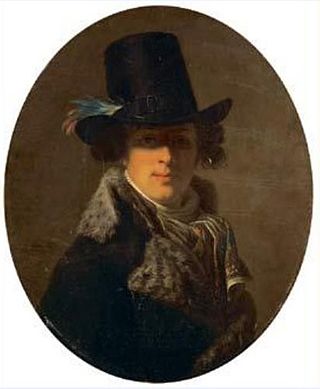
Charles Jean Marie Barbaroux was a Girondin politician of the Revolutionary period and Freemason. He was the leader of the Fédérés and popular in the South of France.

Georges Jacques Danton was a leading figure in the French Revolution. A modest and unknown lawyer on the eve of the Revolution, Danton became a famous orator of the Cordeliers Club and was raised to governmental responsibilities as the French Minister of Justice following the fall of the monarchy on the tenth of August 1792, and was allegedly responsible for inciting the September Massacres. He was tasked by the National Convention to intervene in the military conquest of Belgium led by General Dumouriez, and in the spring of 1793 supported the foundation of a Revolutionary Tribunal, becoming the first president of the Committee of Public Safety.

The Society of the Friends of the Constitution, renamed the Society of the Jacobins, Friends of Freedom and Equality after 1792 and commonly known as the Jacobin Club or simply the Jacobins, was the most influential political club during the French Revolution of 1789. The period of its political ascendancy includes the Reign of Terror, during which well over 10,000 people were put on trial and executed in France, many for political crimes.

Jacques Pierre Brissot, also known as Brissot de Warville, was a French journalist, abolitionist, and revolutionary leading the faction of Girondins at the National Convention in Paris. The Girondins favored exporting the revolution and opposed a concentration of power in Paris. He collaborated on the Mercure de France and the Courier de l'Europe, which sympathized with the insurgents in the American colonies.
The Girondins, or Girondists, were a political group during the French Revolution. From 1791 to 1793, the Girondins were active in the Legislative Assembly and the National Convention. Together with the Montagnards, they initially were part of the Jacobin movement. They campaigned for the end of the monarchy, but then resisted the spiraling momentum of the Revolution, which caused a conflict with the more radical Montagnards. They dominated the movement until their fall in the insurrection of 31 May – 2 June 1793, which resulted in the domination of the Montagnards and the purge and eventual mass execution of the Girondins. This event is considered to mark the beginning of the Reign of Terror.
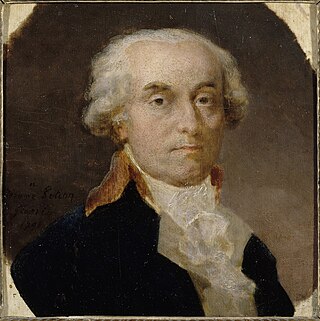
Jérôme Pétion de Villeneuve was a French writer and politician who served as the second mayor of Paris, from 1791 to 1792, and the first regular president of the National Convention in 1792. During the French Revolution, he was associated with the moderate Girondins, and voted against the immediate execution of Louis XVI at the king's trial in January 1793, though he supported a suspended sentence. This led to Pétion's proscription by the Convention alongside other Girondin deputies following the radical insurrection of 31 May – 2 June 1793, and ultimately his suicide together with fellow-Girondin François Buzot while evading arrest during the Terror.

The National Convention was the constituent assembly of the Kingdom of France for one day and the French First Republic for its first three years during the French Revolution, following the two-year National Constituent Assembly and the one-year Legislative Assembly. Created after the great insurrection of 10 August 1792, it was the first French government organized as a republic, abandoning the monarchy altogether. The Convention sat as a single-chamber assembly from 20 September 1792 to 26 October 1795.

The Mountain was a political group during the French Revolution. Its members, called the Montagnards, sat on the highest benches in the National Convention. The term, first used during a session of the Legislative Assembly, came into general use in 1793. By the summer of 1793, that pair of opposed minority groups divided the National Convention. That year, the Montagnards were influential in what is commonly known as the Reign of Terror.

The sans-culottes were the common people of the lower classes in late 18th-century France, a great many of whom became radical and militant partisans of the French Revolution in response to their poor quality of life under the Ancien Régime. The word sans-culotte, which is opposed to "aristocrat", seems to have been used for the first time on 28 February 1791 by Jean-Bernard Gauthier de Murnan in a derogatory sense, speaking about a "sans-culottes army". The word came into vogue during the demonstration of 20 June 1792.
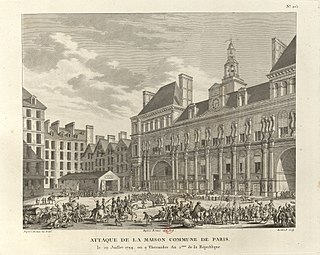
The Paris Commune during the French Revolution was the government of Paris from 1789 until 1795. Established in the Hôtel de Ville just after the storming of the Bastille, it consisted of 144 delegates elected by the 60 divisions of the city. Before its formal establishment, there had been much popular discontent on the streets of Paris over who represented the true Commune, and who had the right to rule the Parisian people. The first mayor was Jean Sylvain Bailly, a relatively moderate Feuillant who supported constitutional monarchy. He was succeeded in November 1791 by Pétion de Villeneuve after Bailly's unpopular use of the National Guard to disperse a riotous assembly in the Champ de Mars.

The September Massacres were a series of killings and summary executions of prisoners in Paris that occurred in 1792, from Sunday, 2 September until Thursday, 6 September, during the French Revolution. Between 1,176 and 1,614 people were killed by sans-culottes, fédérés, and guardsmen, with the support of gendarmes responsible for guarding the tribunals and prisons, the Cordeliers, the Committee of Surveillance of the Commune, and the revolutionary sections of Paris.
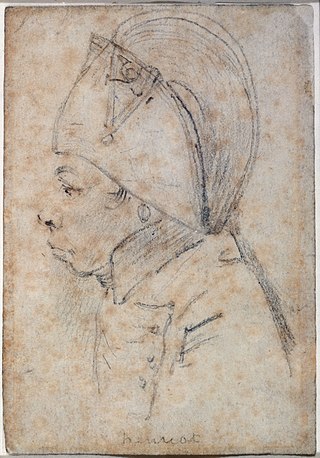
François Hanriot was a French Sans-culotte leader, street orator, and commander of the National Guard during the French Revolution. He played a vital role in the Insurrection of 31 May – 2 June 1793 and subsequently the fall of the Girondins. On 27 July 1794 he tried to release Maximilien Robespierre, who was arrested by the Convention. He was executed on the next day – together with Robespierre, Saint-Just and Couthon – by the rules of the law of 22 Prairial, only verifying his identity at the trial.
The Plain, also known as the Marsh, was the majority of independent deputies in the National Convention during the French Revolution. They were the most moderate and the most numerous group of the National Convention, as they sat between the Girondins on their right and the Montagnards on their left. Their name arises from the fact their benches were by the debating floor, lower down from the Montagnards. Its members were also known as Maraisards, or derogatorily Toads as toads live in marshes.

Maximilien François Marie Isidore de Robespierre was a French lawyer and statesman, widely recognised as one of the most influential and controversial figures of the French Revolution. Robespierre fervently campaigned for the voting rights of all men and their unimpeded admission to the National Guard. Additionally, he advocated the right to petition, the right to bear arms in self-defence, and the abolition of the Atlantic slave trade. He was a radical Jacobin leader who came to prominence as a member of the Committee of Public Safety, an administrative body of the First French Republic. His legacy has been heavily influenced by his actual or perceived participation in repression of the Revolution's opponents, but is notable for his progressive views for the time.
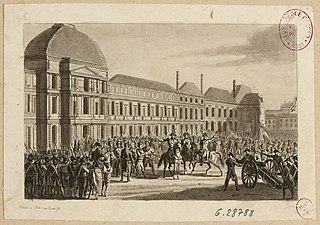
The insurrection of 31 May – 2 June 1793, during the French Revolution, started after the Paris commune demanded that 22 Girondin deputies and members of the Commission of Twelve should be brought before the Revolutionary Tribunal. Jean-Paul Marat led the attack on the representatives in the National Convention, who in January had voted against the execution of the King and since then had paralyzed the convention. It ended after thousands of armed citizens surrounded the convention to force it to deliver the deputies denounced by the Commune. The insurrection resulted in the fall of 29 Girondins and two ministers under pressure of the sans-culottes, Jacobins, and Montagnards.
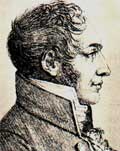
Jacques-Alexis Thuriot, known as Thuriot de la Rosière, and later as chevalier Thuriot de la Rosière, chevalier de l'Empire was an important French statesman of the French Revolution, and a minor figure under the French Empire of Napoleon Bonaparte.

Jean Bertrand Féraud, was a French politician of the French revolutionary era.


















